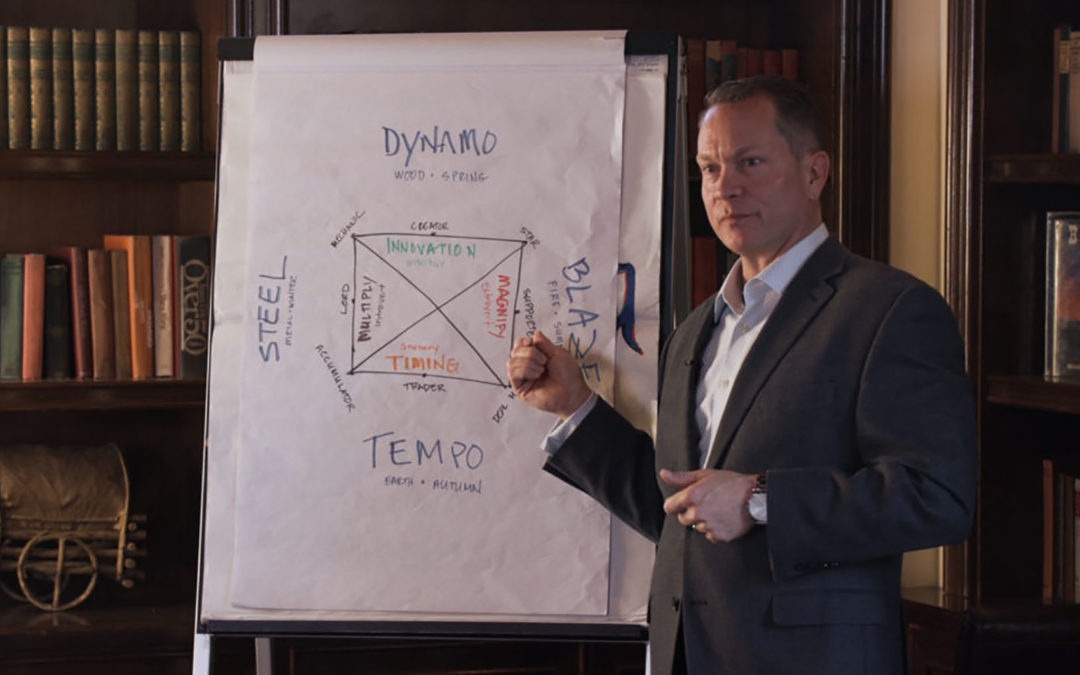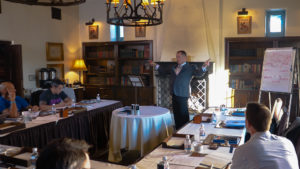For those in the professional HR world, they would be the first to say that there are ‘many factors’ weighed when making hiring decisions. The following are some thoughts, suggestions, and alternatives based on work with clients.
Nearly every entrepreneur, owner and executive leader that I work with is concerned about attracting, hiring, and retaining top talent. The fallacy many of us come face-to-face with is twofold: hiring is a continuous process rather than a one-time event when an opening occurs; and a resume that demonstrates a quantity of ‘experience’ will translate into both skill and fit.
You can create a predictable, repeatable process for hiring talent, integrating their genius into your existing team, and tapping into the very best of what they have to offer.

Talent Dynamics – Intrapersonal Profiling Tool
When designing what would eventually become Leader’s Cut: The Ken Kilday Coaching Experience, it was clear that incorporating a profiling tool would be an essential ingredient.
My experience using various tools impacted the criteria I was applying to any tool:
- It would need to offer more than insight for the person taking the test.
- It would also need to help that leader understand those in their circle, including other leaders, customers, etc. providing insight for higher-level communication.
Talent Dynamics is a leading intrapersonal profiling tool used by more than 500,000 leaders and businesspeople around the world to build trust and flow. The Talent Dynamics test was created by Robert James Hamilton and is based on the Chinese I Ching philosophy.
This ancient divination text also served as the inspiration for Carl Jung’s personality archetypes developed in the early 20th century.
Though it shares some surface similarities with other psychometric tests, Talent Dynamics isn’t about tabulating a score or label to put people in rigid boxes.
Rather than pigeonholing people, Talent Dynamics reveals each person’s natural genius while creating greater understanding and a common language to strengthen trust, communication, and performance.
Hiring a New Teammember
Before you write that job description for the perfect person, make sure you can accurately define your own culture, including your Mission, Core Values, and Purpose.
Without being able to articulate clearly and consistently, it will be difficult to assess an applicant beyond their skill level to perform their duties.
Those that skip this step invariably hire a highly-qualified individual that then struggles to integrate into the team. There are often tangible moments of conflict in addition to the sense that they just don’t seem to fit in with the rest of the team.
In practice, when we have quantified and memorialized Core Values, then assessed whether every leader and team member demonstrates these absolute requirements, it becomes clear why certain people are struggling.
In the past we may have said that they were not a ‘culture fit’, but could not specify what that means.
Hire the person that has the skill, will, and core values that are in alignment with your organization.

Using Talent Dynamics During the Hiring Process
As one aspect of a hiring process, Talent Dynamics can bring clarity to the person you are considering for your team. While the report calls out the type of role that each genius may excel at, it is important to note that there is much more to the story.
Knowing where someone’s natural talent (genius) falls, as well as the degree to which they lean toward that frequency, craft questions to uncover how your applicant uses their genius to bring superior results on behalf of clients, the team, and themselves.
During this conversation, let the give-and-take naturally progress so that the programmed script of the interviewer offering a question and the applicant an answer, dive deeper.
Pull on the thread that brings insight that can only come when you are hearing the natural responses, rather than those prepared in anticipation of canned, predictable questions.
Your goal is to see just how well the applicant knows themselves and knows how to apply their natural born genius.
Streamline Hiring and Onboarding
Here at Leader’s Cut we often say that the equation for success is: Process + People = Profit (and negates the premise that you would never again use algebra after high school).
The best analogy for a strong process is your own skeleton of 206 bones.
Every one of the nearly 8 billion people in the world is born with exactly 206 bones (absent illness or injury), yet every one of us, including identical twins, are unique.
It is a uniform structure that will serve the needs of everyone.
Designing your own ‘skeleton’ of processes within your business is critical to growth and profitability. It also allows every current and future team member to understand the ‘core’ while having the flexibility to add the best of their unique talent.
Many think they have a process for hiring, yet in reality it does not exist without an opening. An effective process that attracts top talent is much like business development.
In BD we make sure we are members of the community and larger network, because we never know when we may need another’s service or when they may need our services.
Talent is exactly the same; always be looking for gifted, skilled people that you may hire yourself or refer to others. In this way, we are never stopping or starting our hiring process, but rather in constant engagement.
Conclusion
If you’d like to learn more about how the Talent Dynamics model can help you and your team with your hiring process or have questions about whether Talent Dynamics or leadership coaching are right for you, let’s find some time to talk so you can figure out if we’re a good fit. You can schedule a free 15-minute meet and greet conversation with me here.




